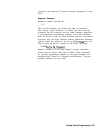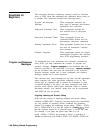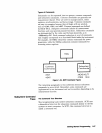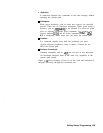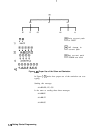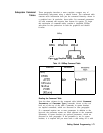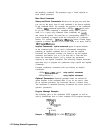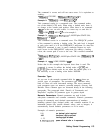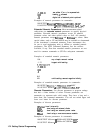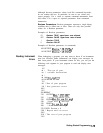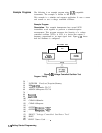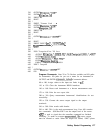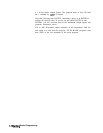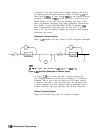
The command is correct and will not cause errors. It is equivalent to
sending:
“FREquency
: CW 5 GHZ ;
:
FREUuency
:MULTiplier
2”.
Example 2:
“FREquency 5 GHZ;
MULTiplier
2”
This command results in a command error. The command makes
use of the default [:CW] node. When using a default node, there is
no change to the current path position. Since there is no command
“MULT”
at the root, an error results. A correct way to send this is:
“FREIJ
5 GHZ
;
FREq
: MULT
2”
or as in example 1.
Example 3:
“FREquency:MULTiplier
2; MULTiplier:STATE ON;
FREUuency : CW 5
GHZ”
This command results in a command error. The FREQ:CW portion
of the command is missing a leading colon. The path level is dropped
at each colon until it is in the FREQ:MULT subsystem. So when the
FREQ:CW command is sent, it causes confusion because no such
node occurs in the FREQ:MULT subsystem. By adding a leading
colon, the current path is reset to the root. The corrected command
is:
“FREquency:MULTiplier
2; MULTiplier:STATE ON;
:FREquency:CW
5
GHZ”.
Example 4:
“FREU
5 GHZ; POWER 4
DBM”
Notice that in this example the keyword short form is used. The
command is correct. It utilizes the default nodes of
[:CW]
and
[:LEVEL]. Since default nodes do not affect the current path, it is
not necessary to use a leading colon before POWER.
Parameter Types
As you saw in the example command table for
SWEep,
there are
several types of parameters. The parameter type indicates what
kind of values are valid instrument settings. The most commonly
used parameter types are numeric, extended numeric, discrete, and
Boolean. These common types are discussed briefly in the following
paragraphs. The paragraph titled “Details of Commands and
Responses” explains all parameter types in greater depth.
Numeric Parameters. Numeric parameters are used in both
subsystem commands and common commands. Numeric parameters
accept all commonly used decimal representations of numbers
including optional signs, decimal points, and scientific notation. If an
instrument accepts only specific numeric values, such as integers, it
automatically rounds numeric parameters to fit its needs.
Examples of numeric parameters:
100
no decimal point required
100.
fractional digits optional
-1.23
leading signs allowed
4.56e<space>3
space allowed after e in exponents
Getting Started Programming 1-73



